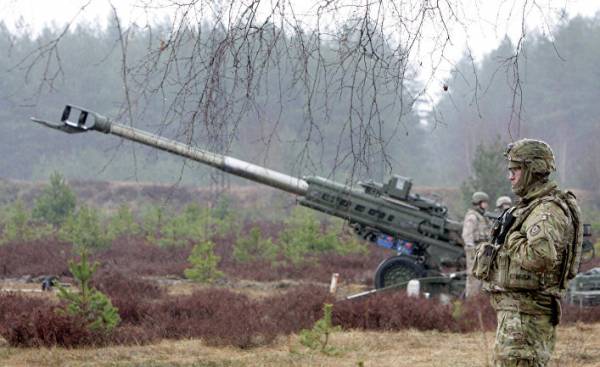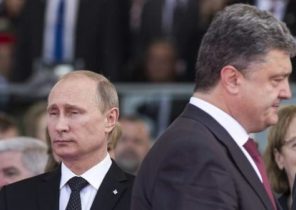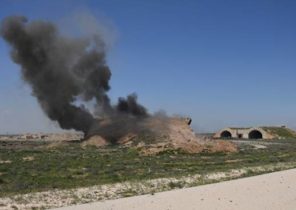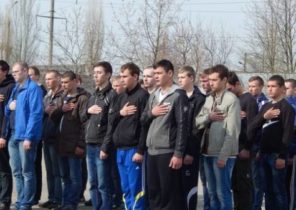
Conducted a final evaluation of major additional resources that must be activated in Europe in case of conflict with Russia. Need 21 team, but nobody wants to Fund it.
The US army in Europe, or abbreviated USAREUR, has completed the process of strategic reconnaissance in Europe and develop a formal request to the Pentagon to highlight the new armored brigade based on the seven battalions for deployment along the Eastern border of NATO.
Last week, the Pentagon asked the United States command in Europe to assess the additional resources that are necessary for activation in the event of a conflict with Russia. Poland, which is called “the center of gravity of the continent”, continues to play the role of the first plan in the NATO operation “Atlantic reserve”, “strategies for the deployment of troops to ensure security in Eastern Europe in the face of aggressive behavior of Russia”. This is one of the largest military location NATO to Russia’s borders since the cold war.
Poland serves as a center for advanced observation, here is the American command brigade and two battalions: the first armored and second field artillery battalion, equipped with self-propelled howitzers M109 Paladin.
Near Povija should have a new stock of armored vehicles that can accommodate two fully-equipped armored battalion. Structure which is costing NATO almost $ 200 million, should come into operation by 2021.
The concept known as “Advanced depots of the army” (Army Prepositioned Stocks), provides for the distribution of military supplies in strategic areas of the world with the aim of reducing the response time in the period of occurrence of possible emergencies on a global level. Every advanced warehouse maintained by a special military mobilization of the reserves of life support (Army War Reserve Sustainment), providing an inventory of weapons parts and necessary equipment. Program of Advanced depots of the army directs the command and supply troops. Transfer of American technology to Europe, in fact, represents a new phase of POMCUS, Advance storage of material resources in sets by departments, which provided for the storage of military material on the frontlines in West Germany during the cold war.
Active points “Atlantic determination”
Four warehouses located in Belgium, Germany and the Netherlands. Primarily we are talking about the same structures that were used during the cold war. 1,6 thousand means of heavy military equipment were deployed in the Dutch Eygelshoven complex, which occupies 500 thousand square meters, including nine warehouses with controlled temperature and humidity. The number of armored vehicles include M1 Abrams tanks, Bradley military vehicles and self-propelled howitzers M109 Paladin. Abrams and Bradley were supplied with weapons, in accordance with the instructions, to quick response capabilities in the event of a crisis (even if some of them arrived in Europe without fuel and with the discharged batteries).
The Dutch warehouse is located on the former military base Eygelshoven near Kerkrade.
Base, which opened in 1985 as a subsidiary base of the American army to resist a possible invasion of the Soviet Union in Europe, was liquidated in 2006. Since September of last year, the Pentagon formally regained base in his possession. Four storage facilities provide US quick access to six thousand pieces of heavy equipment. Another strategically important military equipment warehouse is based in Livorno.
For more than a year as an update of the Norwegian military storage used as warehouses by the United States during the cold war. Program advance store in Norway provides for the deployment of transport and of material resources in warehouses with controlled temperature regime to activate in case of emergency support Expeditionary marine brigade, formed from the 15 thousand soldiers in full supply within 30 days of actual combat. Pre-positioning reduces reaction time, eliminates the need of arms supplies from the United States and the costs of strategic transport. Eight storage reserved for ground, three for ammunition and two for the technical support of aviation. The first store was opened in 1982, and all the rest of the structure was completed in 1988. Storage are under the command of Blount island, managing all programs in advance of storage.
The study area
The delegation USAREUR, currently located in Poland, has already completed a reconnaissance of the strategic locations in Europe. During the so-called study area, the delegation visited various places in Germany (Ramstein and Misau) and the Netherlands (Eygelshoven) to “identify strategic gaps in the logistics network and speed up the process of deliveries to Europe.”
Traditional war in Europe broke out — this is the main signal. Explain here, there will be no battles in the traditional sense of the word. In addition to regional asymmetric contexts, this confrontation will continue in cyberspace.
Latest games Rand and 21 brigade
Existing NATO forces in the Baltic States do not pose a significant threat to Russia. Latest war games, the Rand Corporation showed that the Alliance forces are unable to adequately respond, if Russia attacks the Baltic States (which is not). None of the contexts of production existing NATO forces could not hold the Baltic capitals Tallinn and Riga more than 60 hours. In various proigravshiysya the scenarios NATO troops were defeated within 36 hours. Russian aggression would provide few opportunities for US (the use of nuclear weapons would be inevitable) in case of defeat dominant in Central Europe the strategic protagonist. It would be a failure of nearly 75 years of bipartisan American policy of maintaining security in Europe. The minimum requirements for containment and resistance along NATO’s borders with Russia are guarantees of permanent strategic actions.
The Rand Corporation recommends the deployment of seven independent brigades, three of which have heavy weapons and supported by artillery and air forces. In order to be effective, teams must already be present in Europe: they need to be able to stop the main force of the Russian invasion, estimated at at least 50 tactical battalions. With seven brigades, NATO will be able to keep the defense of the Baltic countries for a maximum of 28 days.
That’s not all. The Rand Corporation believes that after the consolidation of Europe it will have to win, as the forces of seven teams are not enough to indefinitely withstand the advancing Russian forces. The counter, therefore, must be based on the strength of another 14 independent brigades. It is believed that these forces would be enough to win back lost territory and to drop the Russian to their starting positions. Thus, we are talking about the 21st brigade. Seven NATO brigade should be placed in Europe as it is impossible to believe that they can be deployed in time of war, given that the operating forces will not be able to keep the resistance to the East of the Oder river, when the main divisions of the United States located in South-Western Germany, more than 1.6 thousand kilometers from the probable battle zone. Any attempt to organize logistical support, and to strengthen the NATO forces at that distance would be impossible.
NATO will not be able to move and provide support for major combat formations along their Eastern border, especially in all three Baltic countries. Rand war games show that NATO troops should re-form and structure in the 21st independent brigade, organized in three corps of the army. In accordance with the current abilities of the US will be able to provide up to 12 independent brigades (which will cost a fortune).
The current NATO strategy, developed on three teams, tactically absurd and useless. Minimum deterrence program designed for real protection of the Baltic countries, requires the presence of seven teams, three of which are armored. 14 support brigades will be needed to counter-attack and drop the Russian forces.







